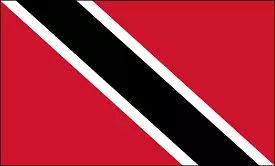This immigration and diversity trend continued after the Spanish lost control and British took over the islands of Trinidad & Tobago; the British also gave away free land to anyone willing to take it. This change in rule also changed the immigrating populations to the islands; during Spanish rule most people who arrived were former slaves or ethnic Spanish, but with the vast expanse of the British Empire, people arrived from China, Africa, and India among hundreds of other places. Again, most of these people brought with them their former cultures in the forms of food, language, religion, dress, and lifestyle.
Today Trinidad & Tobago is still incredibly diverse and the cultures of these people rule the daily way of life in the country. The Indian population is generally Hindu, they don't eat beef, and they live and dress much as their ancestors did in India. The Chinese live and act in a similar manner as their ancestors lived in China. Despite these two groups maintaining their historic cultures to a vast degree, the Africans who settled the region came from various parts of Africa and merged their cultures, which was what was essentially done in the Caribbean, forming a new culture based on a unified African past. This African-based culture is arguably at the core of Trinidadian & Tobagonian culture today.
These Africans arrived from all parts of Africa and came from all circumstances. Some were former slaves in the Americas, some were descendants of slaves, and some arrived directly from Africa. The commonality among these people was that they united to form a unique culture rooted in Africa, but heavily reliant on aspects from the Americas, both North and South as well as the Caribbean.
These ethnic Africans were united by their ancestry, but over time also began connected in a shared culture, which includes music, food, dress, and attitude. These people sought freedom and were optimistic as they began their own farms and businesses. These people created a culture based on camaraderie and focused on socialization, which feels vibrant and alive.
 The flag of Trinidad & Tobago has a couple different meanings. The flag is meant to represent the earth, water, and fire; more specifically, the black symbolizes the wealth of the land and dedication of the people, the red symbolizes warmth and energy from the sun, the vitality of the land, and the courage and friendship of the people, the white symbolizes the seas, the purity of the country's aspirations, and equality.
The flag of Trinidad & Tobago has a couple different meanings. The flag is meant to represent the earth, water, and fire; more specifically, the black symbolizes the wealth of the land and dedication of the people, the red symbolizes warmth and energy from the sun, the vitality of the land, and the courage and friendship of the people, the white symbolizes the seas, the purity of the country's aspirations, and equality.
Name: Republic of Trinidad & Tobago
Independence: August 31, 1962
Capital: Port of Spain
Currency: Trinidadian Dollar
Population: 1,225,225 (2013 estimate)
Ethnicity: Indian, African, mixed, & others
Language: English
Religion: Roman Catholic & Protestant